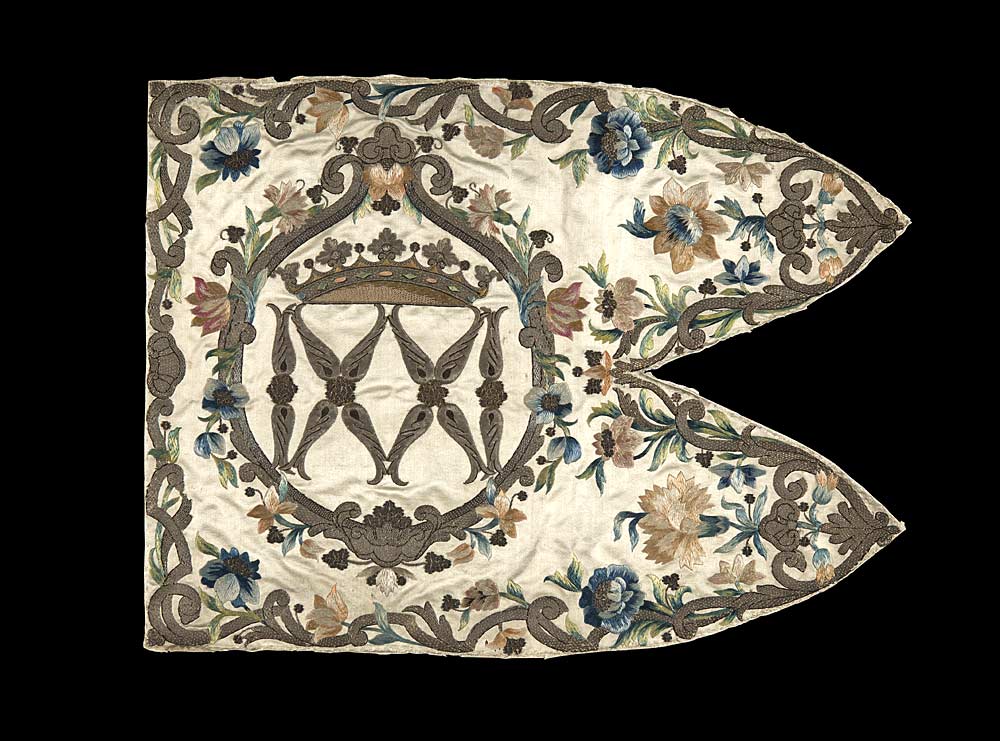Exhibition Index
2021 Online Exhibition
Banner - Flag
A cloth ensign decorated with images of saints or emblems and carried in procession appeared with the canonisation of Saint Stanislas of Krakow in 1253. It is attached to the end of a flagpole.
The mount is material, often silk; the decorations are embroidered or painted then added to the mount.
There are different sorts of banner: 1. Gonfalons, only used in Basilicas; 2. Ordinary banners, measuring 1 metre by 45 centimetres, cut from coloured damask and bearing the image of the church’s patron saint or the brotherhood, which are carried vertically. 3. Big banners depicting a scene painted on canvas and held up by four men with two flagpoles. 4. Small banners, also known as ensigns or pennants, placed near the altar during the religious service or placed in the hands of a statue of Christ resuscitated or a saint, for example, Jeanne d’Arc.
Bibliography
Berthod Bernard, Favier Gaël, Dictionnaire des Arts liturgiques du Moyen-âge à nos jours, Chateauneuf sur Charente, 2015, p. 105.
Lesage Robert. Catholicisme, Paris, 1948, t. 1, col. 1206
Ensign of the Resurrection Early 18th century
Cream silk satin, polychrome silk embroidery & silver thread
Each 40 x 53 cms
Inscriptions: C.R.M.
AD MA-IOREM RESVR[ECTI]. GENTIS GLO-RIAM.
The double-sided ensign displays foliage and bunches of flowers on both sides embroidered in long and short stitch (passé empiétant) around a medallion painted using a needle. On the front, the medallion depicts the resurrection of Christ emerging from his tomb which has the initials C.R.M. on the side, the words GLORIAM …. appear in a heavy silver thread frame. On the back, the medallion is embroidered with the Virgin’s monogram AM, designed around balusters under a ducal crown. This ensign is used during the Easter period to celebrate Christ’s Resurrection as depicted by the embroidery and the two inscriptions. The tomb with C.R.M., the abbreviation for Christus Resurectus Mortis (Christ resurrected from the dead) and the other, even more precise: AD MAIOREM RESVR[ECTI] GENTIS GLORIAM (For the greatest glory of the Resurrected amongst all nations) (the gentiles).
Amongst the flowers it is possible to identify passionflowers as well as carnations, the symbol of Faith and Hope. 22 33 Regarding the monogram, see Josiane Cougard-Frumanand Daniel H. Fruman, Le TrésorBrodé de la Cathédrale du Puy-en-Velay,n° 161, p. 239



